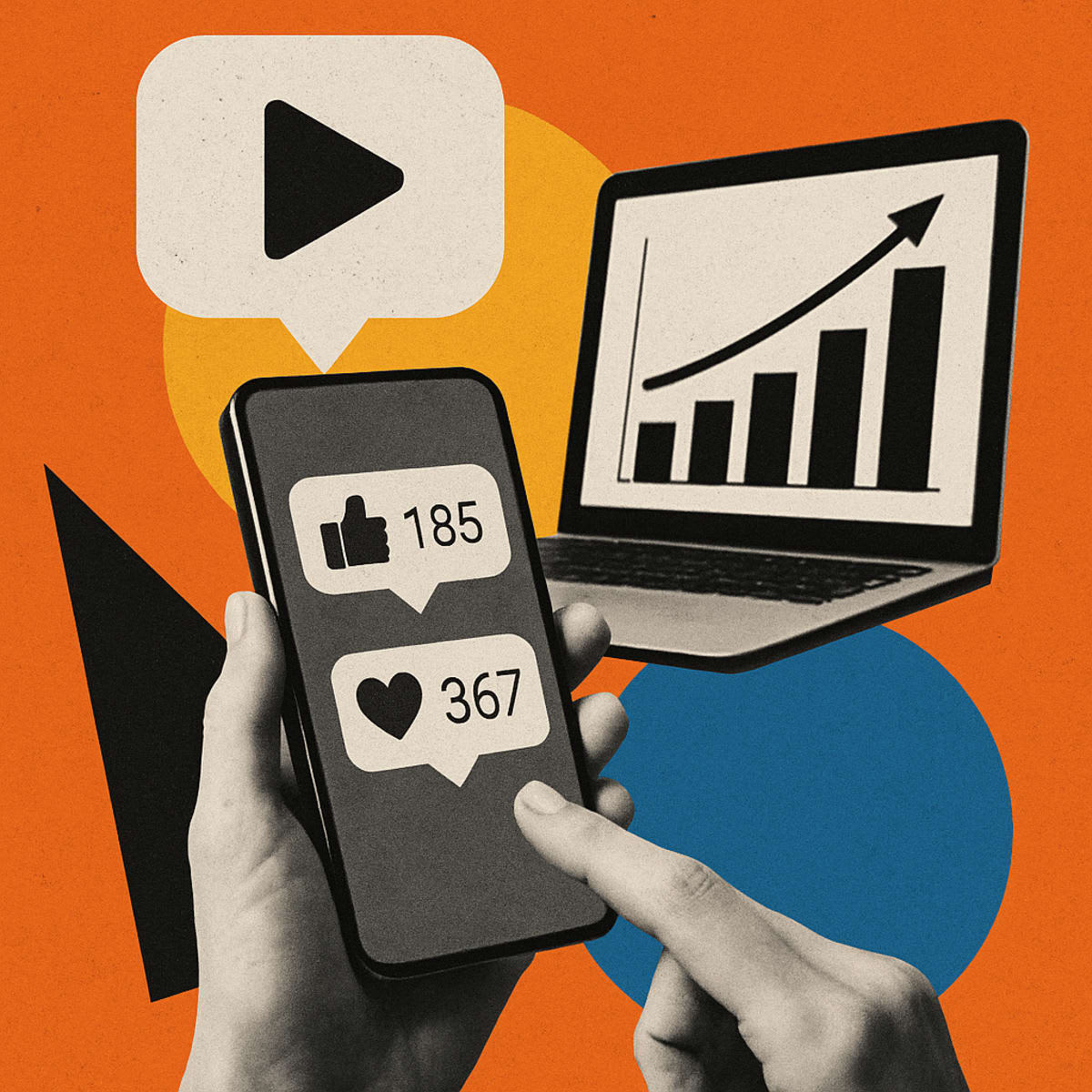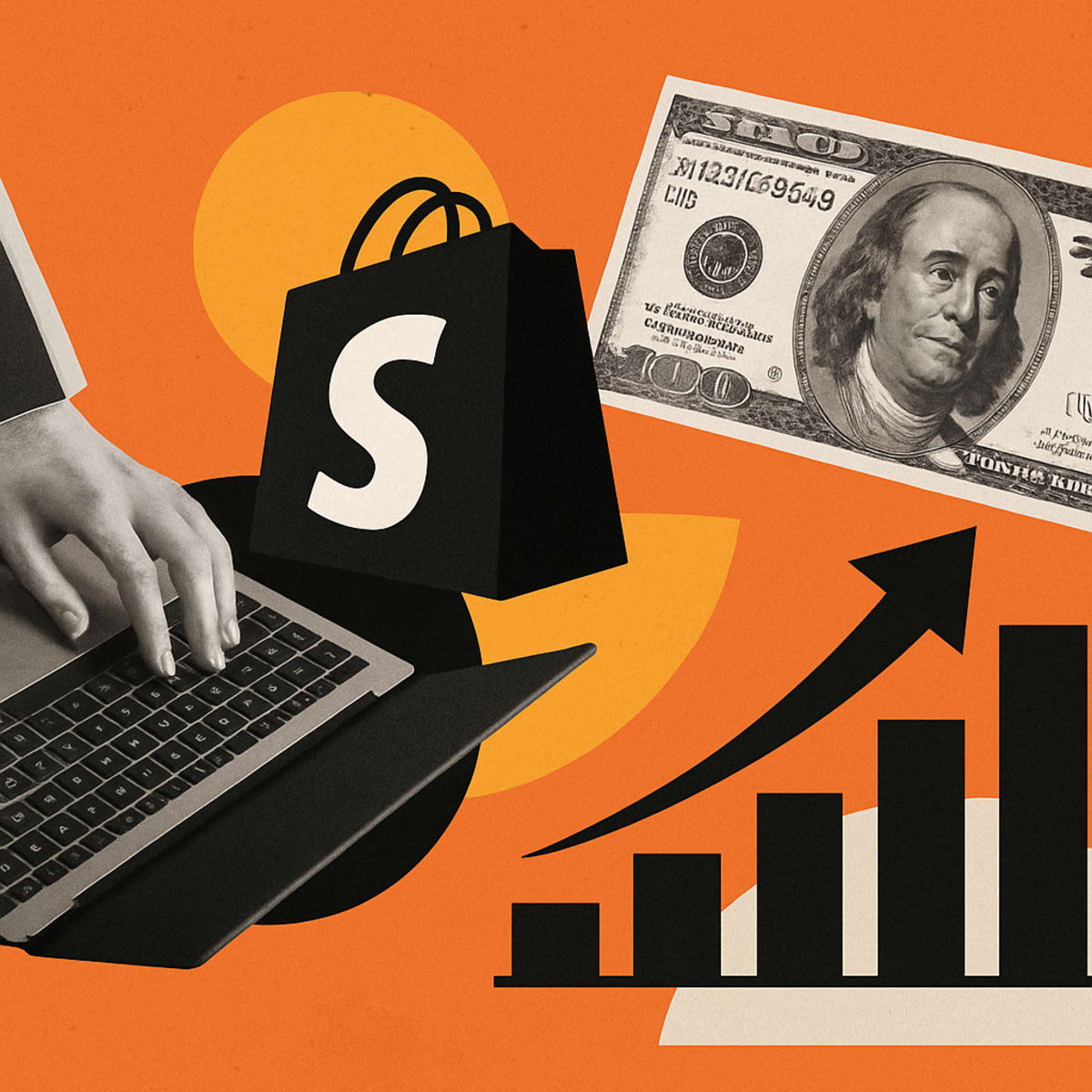Global Social Media Users
In 2025, social media boasts approximately 5.56 billion users worldwide: this equates to about 63.9% of the global population. A significant adoption rate demonstrates social media's importance in daily life Source: Test My Speed.
Time Spent on Social Media
Users dedicate an average of 2 hours and 23 minutes daily to social media platforms; this translates to around 16.6 hours per week. This average reflects a slight decrease from previous years; this indicates a potential shift in user engagement patterns Source: Test My Speed.
Social Media Platforms Usage
The average individual uses 6.8 different social media platforms each month. This multi-platform engagement is crucial for brands; they want to maximize their reach and engagement across various demographics Source: Test My Speed.
Platform-Specific Usage
- Facebook: Approximately 3.07 billion monthly active users (MAUs); it maintains its status as the most widely used platform Source: Test My Speed.
- YouTube: Around 2.53 billion MAUs show its ongoing popularity for video content Source: Test My Speed.
- Instagram and WhatsApp: Each platform has about 2 billion MAUs, reflecting their significance in social commerce and personal communication Source: Test My Speed.
- TikTok: Approximately 1.59 billion MAUs highlight its rapid growth and appeal among younger audiences Source: Test My Speed.
Engagement Rates by Industry
Average engagement rates vary significantly across different industries:
- Agencies: LinkedIn (3.7%), Instagram (3.4%), TikTok (0.7%)
- Education: LinkedIn (2.8%), Instagram (4.2%), TikTok (2.3%)
- Media and Entertainment: Instagram (3.0%), TikTok (1.8%)
- Financial Services: Instagram (3.8%), TikTok (1.6%)
- Dining and Hospitality: LinkedIn (3.9%), Instagram (3.1%) Source: Hootsuite.
Social Media Advertising Spend
Social media advertising is projected to reach $276.7 billion in 2025. A significant portion of this spend—83%—is expected to be generated via mobile platforms by 2030 Source: Sprout Social.
Viral Benchmarks
For content to be considered viral in 2025:
- TikTok: It must achieve 1 million views within 72 hours.
- Instagram Reels: Viral status arrives at 500K views with 50K+ shares.
- Facebook: Requires 1 million views coupled with 100K meaningful interactions Source: Bluehost.
Conclusion
The benchmarks for social media in 2025 indicate a complex, evolving landscape; brands must adapt their strategies. Meeting the changing needs of their audiences and maximizing engagement across multiple platforms is essential.
How can Businesses Use Social Media Benchmarks?
Understanding Social Media Benchmarks
Social media benchmarks are critical for businesses; they evaluate their performance against industry standards and competitors. These benchmarks provide an average result; it serves as a standard for measuring success in social media marketing. A strong social media marketing strategy can help businesses achieve these benchmarks.
Importance of Social Media Benchmarks
- Performance Comparison: Businesses assess their social media performance; they compare their metrics (like engagement rates and follower growth) to industry averages. For instance, a company in the education sector with a 2% engagement rate on Instagram can identify a gap that needs addressing; the industry average is 3.5%. This comparison helps set realistic expectations and goals based on industry norms Hootsuite.
- Goal Setting: Benchmarks allow businesses to establish achievable goals. For example, a brand can set a target of matching or exceeding a 21% average follower growth rate on TikTok Emplifi.
- Identifying Best Practices: Companies can adopt successful strategies; they analyze what works well in their industry. A report notes that collaborative posts on Instagram result in 3.4 times more engagement; this prompts brands to explore partnerships Emplifi.
- Budget Allocation: Social media benchmarks help businesses allocate advertising budgets effectively. Understanding which platforms generate the best outcomes enables brands to invest where they see the highest returns. According to DISQO, brands use benchmarks to ensure ad dollars go toward strategies that yield the best results DISQO.
Case Studies and Examples
- Nike's Campaign: Nike’s #YouCantStopUs campaign achieved a 20% increase in online interactions; it aligned its messaging with social issues. This demonstrates the power of using benchmarks to inform strategy Emplifi.
- Chipotle on TikTok: Chipotle effectively used TikTok; it engaged in viral challenges. Massive user participation occurred in initiatives such as the #GuacDance challenge; this shows how understanding platform-specific benchmarks drives engagement Emplifi.
Utilizing Social Media Analytics Tools
To effectively utilize social media analytics, consider tools such as Hootsuite Analytics, which allows businesses to benchmark their performance easily against competitors. Also consider Enrich Labs, which offers a deeper, more tailored solution: AI-driven insights, custom-trained on your brand's specific guidelines, that go beyond simple benchmark comparisons. While generic tools show you what is happening, Enrich Labs shows you why, turning raw data into actionable strategies for meaningful growth; brands can view metrics such as profile impressions, engagement rates, and audience growth rates. They set up custom timeframes to track changes Hootsuite.
Overall, leveraging social media benchmarks enables businesses to make informed decisions, optimize their strategies, and enhance their social media presence.
What Metrics Should be Included in Social Media Benchmarks?
Key Metrics for Social Media Benchmarks
Social media benchmarks play a crucial role; they provide insight into performance across platforms and industries. The following metrics are essential for creating effective benchmarks:
Profile Impressions: This measures how often a profile's posts appear; it helps gauge visibility.
Example: A brand increasing its profile impressions by 20% may successfully expand its reach.
Profile Reach: This indicates the number of unique users who saw the posts; it distinguishes between total impressions and actual audience engagement.
Case Study: A campaign that effectively combines paid and organic posts might see a substantial increase in reach without a corresponding jump in impressions.
Followers: Tracking the number of followers helps assess audience growth and brand loyalty.
Example: A 15% increase in followers over three months indicates effective outreach or content strategy.
Audience Growth Rate: This metric tracks the speed at which a brand's audience grows; it's often expressed as a percentage.
Data Point: Educational institutions reported 2.28% weekly follower growth on TikTok in Q1 2025 Hootsuite.
Engagement Rate: A critical metric measures interactions (likes, shares, comments) relative to followers or reach. It provides insight into content resonance with the audience. Understanding social media engagement is crucial for improving this metric.
Industry Standard: Agencies had a 3.7% average engagement rate on LinkedIn as of January 2025 Hootsuite.
Video Plays: This metric tracks how often videos have been played; it's particularly relevant for platforms emphasizing video content.
Example: Brands using video posts on Facebook might see higher engagement compared to static images.
Posting Frequency: Understanding post frequency can correlate engagement rates with content output.
Data Insight: Education-sector institutions averaged 10.1 posts per week on X (Twitter) Hootsuite.
Clicks: This measures the number of times links in posts are clicked; this provides insight into how compelling the content is.
Usage: Brands might increase click-through rates; they adjust their call-to-action strategies.
Shares: This reflects how often users share content; it is vital for organic reach expansion.
Example: A post with high share rates suggests audience resonance; it prompts sharing within networks.
Conclusion
Incorporating these metrics into social media benchmarks allows brands to assess their performance effectively. Businesses set realistic goals and optimize strategies for better outcomes; they compare results against industry standards.
How do Social Media Benchmarks Vary by Industry?
Average Engagement Rates by Industry
Social media engagement rates differ significantly across industries; recent studies outline this. Hootsuite's data reveals average engagement rates for several industries as of January 2025:
Agencies:
Education:
- LinkedIn: 2.8%
- Instagram: 4.2%
- TikTok: 2.3%
Healthcare:
- LinkedIn: 3.3%
- Instagram: 3.7%
- TikTok: 1.0%
Finance:
- LinkedIn: 3.2%
- Instagram: 3.8%
- TikTok: 1.6%
Dining & Hospitality:
- LinkedIn: 3.9%
- Instagram: 3.1%
- TikTok: 1.3%
These rates illustrate how different sectors leverage social media platforms; they engage with their audiences effectively Hootsuite.
Facebook Engagement Rates by Vertical
In 2024, the average engagement rate on Facebook varied notably by industry:
- Sports Teams: 0.23% (highest)
- Higher Education: 0.13%
- Influencers: 0.1%
- Fashion & Beauty: Lower rates indicate industry-specific challenges Statista.
Instagram Ads Conversion Rates by Industry
On Instagram, conversion rates fluctuate across sectors:
- E-commerce: 1.85% - 2.5%
- Fashion and Beauty: 2.0% - 3.0%
- Travel and Hospitality: 2.8% - 3.5%
- Technology: 0.9% - 1.5% Driftlead.
Conclusion: Importance of Industry Benchmarks
Understanding these benchmarks is crucial for businesses; they set realistic goals, assess performance, and strategize to improve engagement and conversion rates. Each industry has unique characteristics; they influence audience interaction on social media, necessitating tailored approaches for optimal results.
What is the Importance of Social Media Benchmarks?
Understanding Social Media Benchmarks
Social media benchmarks are crucial; they evaluate the effectiveness of social media strategies and campaigns. They provide a standard of performance; this allows brands to assess their marketing efforts relative to industry norms. Here are key points on their importance:
- Contextualizing Performance: Social media benchmarks allow brands to understand performance relative to competitors and industry averages. For instance, brands in the media sector, which published an average of 64 posts per day in 2024, can compare engagement metrics; this helps them adjust strategies Sprout Social.
- Setting Realistic Goals: Using benchmarks helps marketers set achievable social media goals. For example, a brand with an engagement rate below the 3.4% industry average for Instagram can identify it as an area for improvement Hootsuite.
- Identifying Areas for Improvement: Benchmarks reveal specific metrics that need attention. For instance, if a brand observes lower-than-average follower growth, they might analyze their social media marketing; this determines why they do not engage audiences effectively Hootsuite.
- Enhancing Content Strategy: Brands can adapt strategies; they understand which content types resonate most within their industry. They then focus on high-performing formats. For example, Instagram Reels constituted 38% of brand posts in 2024; this indicates a trend that brands can capitalize on Emplifi.
- Justifying Marketing Spend: Benchmarks also justify marketing budgets; they provide data-driven insights into what works and what does not. Brands can use metrics like average inbound engagement rates, which increased by 20% in 2024; this demonstrates campaign effectiveness Sprout Social.
- Competitive Analysis: Competitive benchmarking allows brands to analyze competitor social media competitor analysis; it provides insights that inform strategic adjustments.
- Tracking ROI Effectively: Measuring ROI becomes more straightforward; benchmarks are established. Brands compare returns against industry averages; this assesses the success of social media initiatives Improvado.
In essence, social media benchmarks serve as a vital tool; they aid strategic planning, performance evaluation, and continuous improvement in marketing efforts.
How can I Improve my Social Media Performance Based on Benchmarks?
Utilize Social Media Benchmarks for Improvement
To enhance social media performance, industry benchmarks are crucial. Here are specific strategies based on recent data:
Prioritize Emerging Platforms:
Focus on High-Engagement Content Types:
- Instagram Reels: 38% of brand posts on Instagram were Reels as of Q4 2024; this significantly enhances engagement. Brands should create more Reels; they align with this trend Emplifi.
- Collaborative Posts: Engagement from collaborative posts sees a 3.4x boost on Instagram. Partnering with influencers or other brands can strategically enhance visibility and interaction Emplifi.
Analyze Industry-Specific Engagement Rates:
- Use tools like Hootsuite Analytics to compare your engagement rates against industry benchmarks. For example, the average Instagram engagement rate is 4.2% for the education industry; it is 3.4% for agencies. Understanding performance relative to these benchmarks guides content adjustments Hootsuite.
Optimize Posting Times:
- The best overall time to post on social media in 2025 is 12 PM on Fridays. For specific platforms:
Use Data to Guide Strategy:
- Employ metrics to assess performance and adjust strategies. For instance, analyzing average daily inbound engagements per post can reveal which content resonates best with your audience. Brands saw a 20% increase in average inbound engagements in 2024 Sprout Social.
Invest in Quality Content and Community Engagement:
- Brands increasingly focus on building strong communities and creating personalized content experiences. This approach significantly enhances brand loyalty and engagement Deloitte Digital.
To truly understand and act on these insights, consider a platform like Enrich Labs. While many tools offer surface-level analytics, Enrich Labs' AI agents dive deep, providing context-rich analysis and actionable recommendations tailored to your brand's unique needs; this ensures your strategies are not just benchmark-driven, but also deeply aligned with your business goals.
Implementing these benchmark-based strategies can lead to substantial improvements in social media performance and audience engagement.
What Trends are Influencing Social Media Benchmarks in 2025?
Key Trends Influencing Social Media Benchmarks in 2025
Rise of Micro-Influencers:
In 2025, brands increasingly collaborate with micro-influencers (those with fewer than 100,000 followers) rather than larger influencers. This shift occurs because micro-influencers foster higher engagement rates and more authentic connections with their audiences. HubSpot's report indicates marketers find this approach cost-effective and credible; micro-influencers often resonate better with niche audiences.
Content Experimentation:
Social media teams move away from strict brand consistency; they embrace creative experimentation. Hootsuite reports that 60% of social content now focuses on entertaining or educating audiences; some brands even shift to 80-100% entertainment-driven content. This trend allows brands to push creative boundaries; unique, engaging posts stand out in crowded feeds.
Authenticity and Human Connection:
As consumers demand more genuine interactions, content creation requires authenticity. Brands leverage AI in social media marketing to enhance efficiency, but they ensure the human touch remains in their messaging. The need for authentic engagement reflects the rise of human-first content; brands prioritize personal connections over automated responses.
To manage this balance effectively, consider leveraging AI tools designed to enhance, not replace, human creativity. Enrich Labs' AI agents, for example, can automate time-consuming tasks like social listening and content analysis; this frees your team to focus on crafting authentic, engaging narratives that resonate with your audience.
Short-Form Video Dominance:
Short-form video continues to dominate social media. Platforms such as TikTok, Instagram Reels, and YouTube Shorts see increased engagement; brands focus on creating quick, impactful videos. These capture audience attention within seconds and align with consumer preferences for snackable, shareable content.
Educational Content:
Educational content that provides value to consumers receives growing emphasis. Brands creating how-to tutorials, tips, and informative posts see higher engagement rates. This shift reflects a broader social media trend; audiences seek information to solve problems or enhance skills.
Community Building:
Community-building efforts become crucial for brands; 85% of marketers emphasize its importance. Engaging with audiences through community-focused content fosters loyalty and trust. This trend is particularly relevant as social media platforms prioritize user interactions and community engagement over direct sales pitches.
AI Integration:
AI tools integrate into social media strategies; they optimize content creation, personalize user experiences, and enhance engagement. Brands use AI for everything from scheduling posts to creating tailored content based on user preferences. This trend indicates data-driven marketing strategies that leverage technology for improved outcomes.
Transparency and Trust:
Building trust through transparency becomes a priority for many brands; 68% of consumers indicate that they value authenticity in brand communications. This trend underscores honest marketing practices and open communication between brands and audiences.
Case Studies
- Patagonia: Known for its sustainability commitment, Patagonia effectively uses long-form content aligning with brand values. Engaging storytelling highlights environmental issues; it reinforces eco-friendly credentials.
- Spotify: Through annual Wrapped reports, Spotify uses AI to analyze user data; it creates personalized experiences. This demonstrates how technology enhances human-centric marketing.
These trends collectively indicate a significant evolution in social media marketing; it emphasizes creativity, authenticity, and technology integration. The goal: foster deeper connections with audiences.
Conclusion
Social media benchmarks in 2025 are not just about numbers: they reflect a shift toward more meaningful, authentic, and data-driven strategies. For brands looking to stay ahead, embracing these trends and leveraging advanced tools is essential.
Want to see how Enrich Labs can transform your social media strategy with AI-driven insights and tailored solutions? Visit Enrich Labs to learn more and request a demo.
Source: HubSpot Blog's 2025 Social Media Marketing Report, Hootsuite Social Media Trends 2025, The Future of Social Media: 10 Trends Shaping 2025




